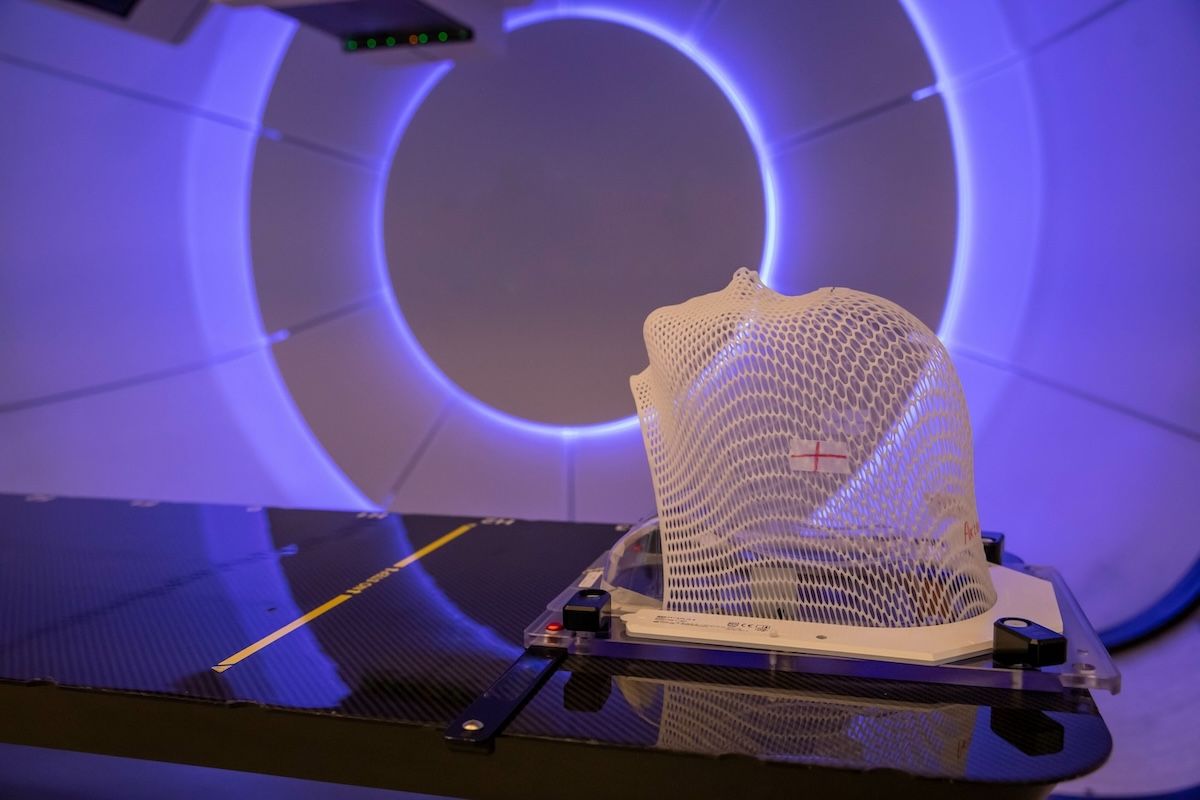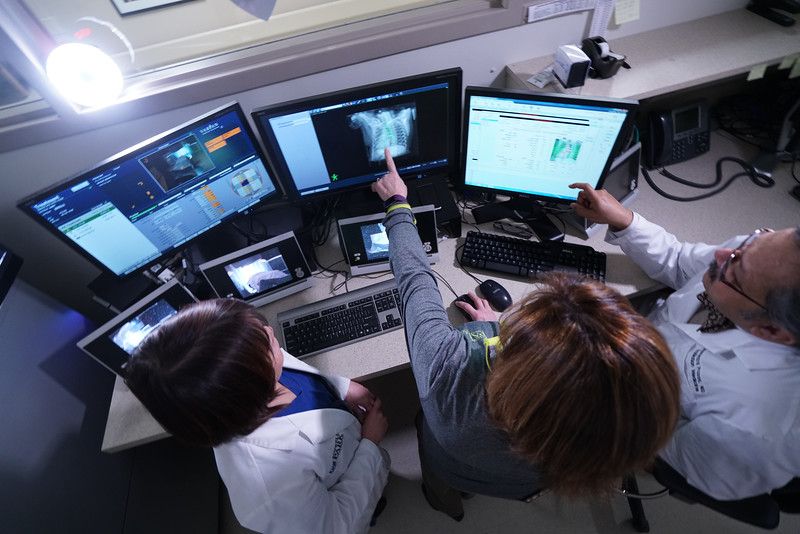External beam radiation therapy is the most common type of radiation therapy used to treat cancer.
Radiation therapy kills cancer cells by damaging the DNA in the cells so they cannot replicate. The cancer cells then begin to die off days or weeks after your treatments and may continue to die off for several months. Because radiation can also harm healthy cells, your radiation team will carefully design your treatment to limit damage to healthy cells by planning the dose of radiation, targeting the precise area to radiate and spreading your treatments out over time.
How many treatments?
External beam radiation therapy is usually delivered once a day, every day Monday through Friday for a course of two to 10 weeks, depending on your cancer type and treatment goals. Your radiation team will determine the dose of radiation you need and divide that into a certain number of treatment sessions, called fractions. Some people have their radiation on a different schedule with fewer fractions or more fractions. Your treatment at Roswell Park will be designed specifically for you and your cancer.
Your simulation session
Before you begin treatment, you will have a planning session, called a simulation, at the treatment center. Your care team will explain your treatment, how to prepare, what to expect and answer any questions you have. This appointment can take 1-2 hours and will involve several steps:
- Imaging such as x-rays or scans will be taken to determine the precise area of the body to receive radiation, called the treatment field.
- Markings with dots of colored ink or tattoos will be placed on your skin to mark the treatment area. These marks are about the size of a freckle and your radiation therapist will use them at every treatment to ensure you are in the correct position.
- Making a mold or mask. Made from plastic or plaster, a mold made of a part of your body will keep you from moving during treatment. If you are having radiation to the brain, head or neck, a mask made from molded plastic mesh keeps you in the exact position for every treatment.
What happens during the treatment?
You will be asked to change into a hospital gown. Then, you’ll lie on the treatment table and the radiation therapist will use the tattoos or marks on your skin, your body mold or your mask to get you into the correct position. You will see harmless colored lights from the machine project onto your skin which also help ensure you’re in the right position.
Just before the treatment the therapist will leave the room (to avoid radiation exposure) but will be in a nearby control room and see you on a monitor or through a window. You will need to remain very still. The actual radiation treatment takes only 1 to 5 minutes. You will not be able to hear, see, feel or smell the radiation.
Side effects of radiation therapy
The type of side effects you may experience will depend on the type of radiation treatment you receive and the area that is treated. Side effects that occur during the course of treatment are called “early” side effects. “Late” side effects are much less common and may arise months to years after treatment.
Generally, most people do not experience side effects during the first couple of weeks of treatment. That’s because we give a small dose of radiation each day, which adds up over the course of treatment.
Radiation affects only the treated area, so early side effects are predictable based on the area being treated. For breast cancer patients, early side effects include skin changes and fatigue. Treatment to the belly area can result in nausea and diarrhea. Prostate cancer treatment may result in discomfort with bowel movements and urination. Head and neck radiation can cause discomfort with swallowing.
You’ll meet with your doctor once a week during treatment, to see how you’re doing. Be sure to alert your care team to any side effect you’re having, so they can recommend interventions to ease them. These interventions could include skin creams, dietary modifications, new medications or changing your existing medications.

